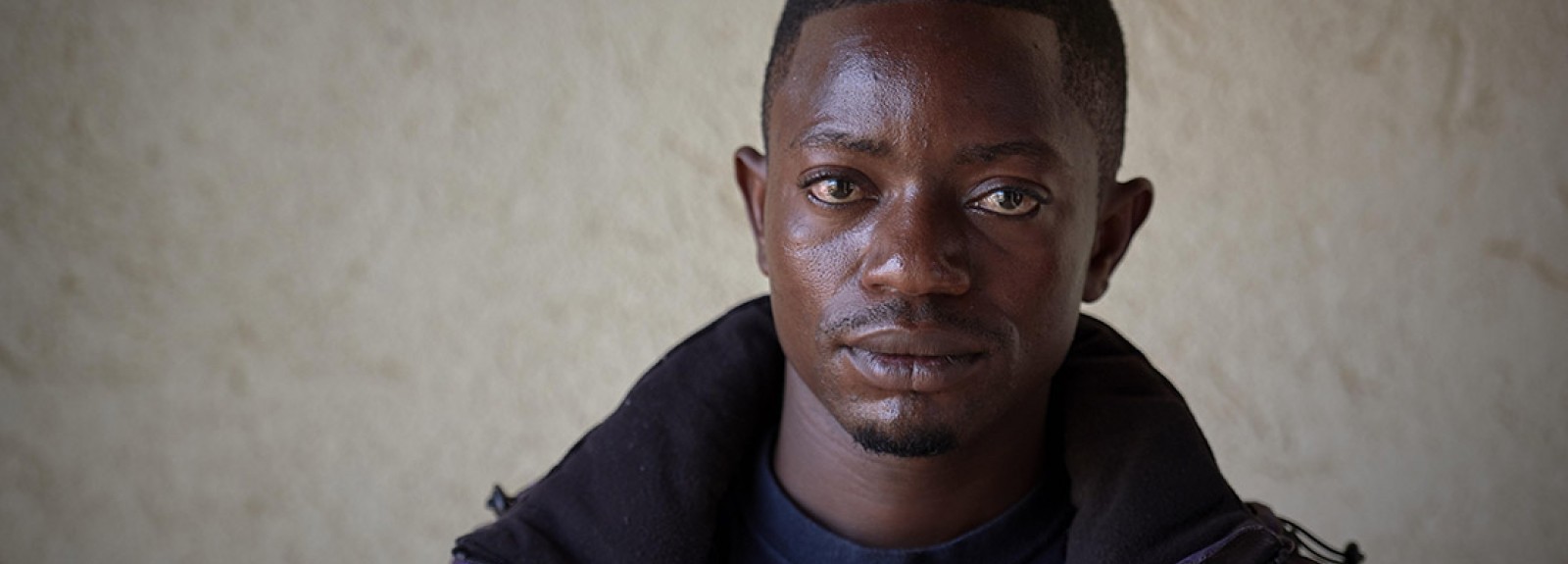BENI, Democratic Republic of Congo – He thought it was malaria. The fever. The chills. Diarrhea and a headache. All of which he thought went along with the ages-old disease that still grips 25 million people a year in this country alone. But when Katembo Mastaki Barnabas went to the hospital near his home, the doctors and nurses who came to treat him at his bedside diagnosed him with Ebola Virus Disease.
“It was really scary,” he said. “They wore those masks and the protective clothing and everything.”
It wasn’t his symptoms alone that tipped off the staff that Barnabas may have contracted the disease. His name appeared on a list of individuals who had attended the funeral of someone who had died of the disease. The lists are compiled through a labor-intensive effort known as contact tracing, a core component of the IMA World Health response to the disease here in eastern DRC.
“Contact tracing entails identifying all persons who have had close contact with an Ebola patient, they are counseled and vaccinated,” IMA’s Dr. Bill Clemmer said. Clemmer leads IMA’s Ebola response, funded by the U.S. Office of Foreign Disaster Assistance. “Symptoms are monitored closely over a three-week period. This is a core component of community surveillance and early response to infection.”
A house-by-house battle, for health and for minds
In Beni, the epicenter of this outbreak, contact tracers work in teams. They travel roads, red-clay footpaths, crossing rocky creeks, all to follow the leads they receive of where someone may have come in contact with Ebola within the 21-day window that marks the onset of symptoms. Along the way, they instruct communities in the importance of handwashing, of being vaccinated and in seeking treatment if symptoms occur.
It is work that is as labor-intensive as it is dangerous. IMA works through a faith-based local partner, Programme de Promotion de Soins Santé Primaires, to reach deep into communities with local staff, and to promote trust in the effort.
As the international community has focused its response in Beni, the influx of foreigners, the investment of money and the perceived relative lack of concern for chronic humanitarian issues present before Ebola foster animosity. Aid workers are regularly targeted for attacks. An IMA-supported clinic was burned down. Staff have been abducted, all the while in an area known for its panoply of rebel groups that oppose the government in Kinshasa.
“I’ve been working in Africa for over 30 years and I’ve never seen anything like this,” Clemmer recalled in a recent broadcast of the CBS television news program, 60 Minutes. “Communities evade our surveillance teams; some allege that our only concern is preventing the spread of Ebola outside of the DRC’s borders. We have even had rocks thrown at our vaccination teams.”
Increased military presence by security forces has had mixed results. Having UN and other security forces accompany aid workers militarizes the response and further erodes trust between humanitarian organizations and local communities. The Ebola response is being coordinated and led by the DRC Ministry of Health with technical assistance from international organizations such as WHO, the U.S. Centers for Disease Control and Prevention and a host of international non-governmental organizations.
Stopping Ebola
Hand washing and temperature-taking stations are outside of hospitals, health care facilities and most publicly-accessible buildings. Anyone with suspected symptoms is immediately isolated, and a hotline to a Ministry of Health/WHO surveillance team is called. Patients are transported to a transit facility to be stabilized and then moved to a treatment facility to recover.
More than 2,000 have died from the disease in this outbreak alone. News of a new vaccine and a treatment protocol – revised since the West Africa outbreak of 2014 – has gained traction locally, including the use of a new monoclonal antibiotic that has yet to gain full U.S. Food and Drug Administration approval.
The vaccine, drug and other treatments that cure Ebola were not available in the large, 2014 outbreak in West Africa. Even though they are available in this outbreak, and appear to be very effective, the level of instability, mistrust and insecurity have kept survival rates on par with those from the 2014 crisis. The availability of the vaccine and its distribution has also been a challenge that has complicated logistics as much as community trust in the response.
Barnabas was in the hospital for 12 days, receiving the treatment and medicine that helped him to beat Ebola. He improved steadily but is still not strong enough to farm. He is happy the disease seems to be on the run and says he tells anyone who will talk to him about the treatment he received.
“It was scary,” he said. “But overall I am very happy. I have many friends who have died from Ebola. I am glad to be home.”


